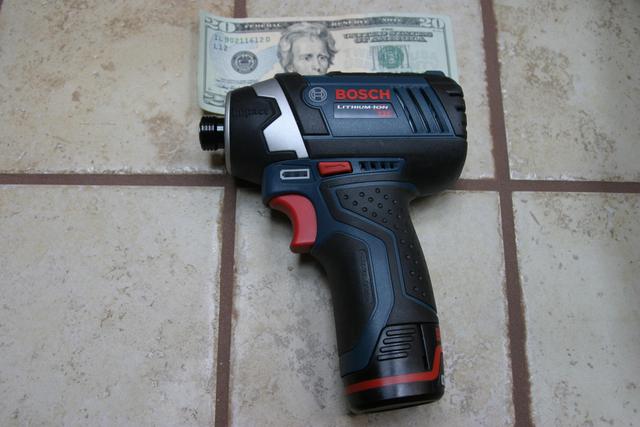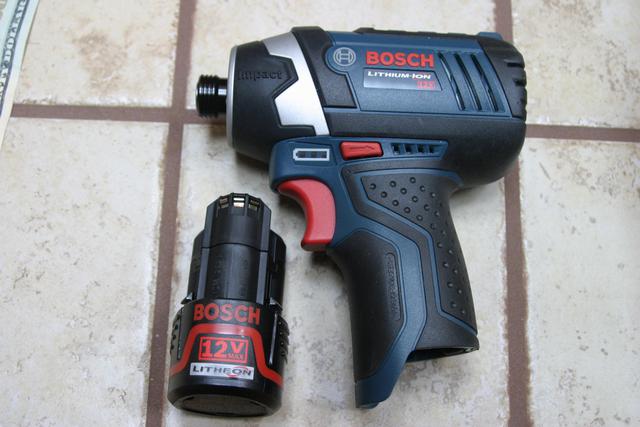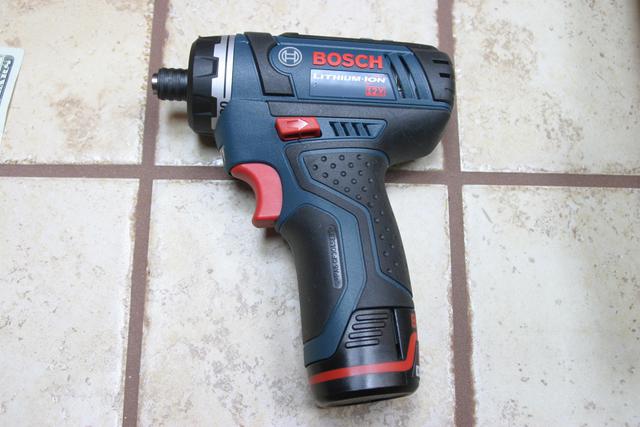I’ve wanted a 3M Sun Gun since I first saw one. A great tool for paint work and detailing, alongside an LED flashlight (I’m using a Maglite XL200 at the moment). This type of light has a 4700K “daylight” bulb for true color rendering. However, I don’t care all that much about the color accuracy. My intended use is for swirl spotting when polishing a car, and the 3M Sun Gun is expensive. A simple 12V light kit using an off-the-shelf MR-16 bulb should not have a street price of $400, with an extra NiCad battery costing near $90 and a bulb that lists at $504 for a case of 6!
Thanks to several Internet forum posts in various places, particularly the post from Starscream88 on Bimmerfest, I created my own for a LOT less using a 12V cordless drill as the base. Ordering parts from Amazon, I spent $92. That includes the drill with battery and charger, an extra battery (for a total of 2), a charger, a tailed bulb socket, the correct bulb, a spare bulb and the soft case that was included with the cordless drill. I may add a 40mm 12V fan to help keep the bulb cool, especially since I intend to fiddle with a 50W bulb in place of the usual 35W bulb.
The drill I’m using as the base is a Skil 2240-01 from Amazon which was $40.97. To connect the bulb, I am using a Leviton 80054 miniature bi-pin base, which has wires pre-attached. It was $4.64 at Amazon. The bulb is an EiKO 35003 SoLux True Daylight Flood 35 Watt MR16 Halogen Lamp, 36 Degree Beam Angle. It was $7.95 at Amazon. No additional parts are needed, so you can put together this setup for a total of $40.97 + $4.64 + $7.95 = $53.56. That’s about 87% cheaper than the 3M Sun Gun. I added an extra battery ($32.97) and a spare bulb to bring my total to $92, which is still only 23% of the cost of a 3M Sun Gun kit which has one battery and no spare bulb.
The Skil 2240-01 drill kit, extra battery, Leviton 80054 bulb base and an EiKO 18003 SoLux True Daylight Flood 50W MR16 36 Degree Beam Angle bulb arrived today. The EiKO Solux 35W bulbs won’t arrive until next week.
I took the drill apart by removing the eight Torx T10 screws.

I then removed the chuck assembly (it slides off of the motor easily).

I then snipped the wires from the motor and removed it. Testing the bulb fitment, I wanted the bulb to be close to the front edge of the housing. There is a surrounding groove here formed by two ridges that is near perfect, except that the rearward ridge is too small in diameter. This means that the housing won’t go back together nicely as is, because the rear surrounding ridge hits the bulb housing right behind the lens before the drill housing halves are fully seated. The solution is to Dremel off enough of this surrounding ridge to let the bulb install snugly without preventing the housing from going back together. I removed about 5/32″ of it, by hand with a cutting wheel on the Dremel. This allowed a perfect fit of the bulb.


I twisted the bulb socket wires to the power leads, put a bit of solder on them to prevent strand breakage, then installed some small wire nuts. This will make it relatively easy to replace the bulb socket someday if necessary.

For the heck of it, I hooked up the 50W bulb and tried the light. It works fine, though the drill’s current control circuit emits a faint high-pitch squeal when the trigger is pulled less than halfway. I’m assuming it does the same with the drill motor under high load, you just can’t hear it over the drill motor. Given that I’ll only have the light on for a few seconds at a time, it appears that the 50W bulb does not get hot enough to cause problems. However, it’s crazy bright… I’d probably need sunglasses to use it. I’ll try the 35W bulbs when they arrive, which will be easier on my eyes and should be plenty sufficient given that it’s the same bulb that’s in the 3M Sun Gun.
In any event, it turned out nicely.

And it fits in the case with the charger, extra battery and spare bulb.


More pictures are available in the photo album.
March 10, 2012
The 35W Solux 4700K bulbs arrived this week. Today I replaced the 50W bulb with one of the 35W bulbs. I think this will work better than the 50W bulb; the reflection is less blinding. A 35W spare and the 50W both fit in the carrying case. Now I just need to order a Torx T10 driver to leave in the carrying case, probably a Wiha SoftFinish.













